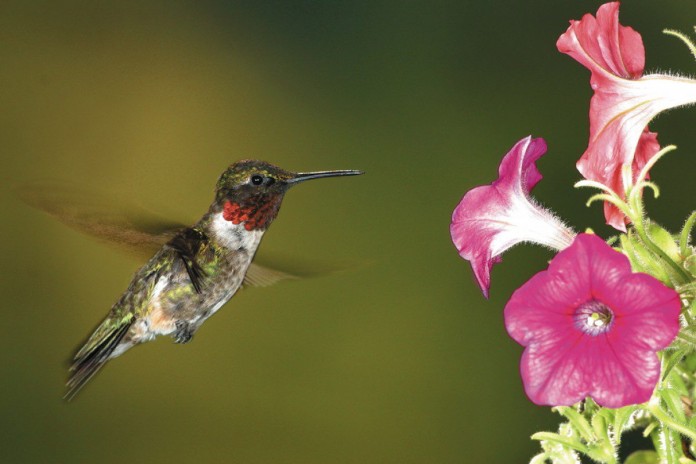May is when many birders are born. The aroma of lilacs fills the air and spring migration shifts into overdrive.
Though many migrants have already arrived, May brings wave after wave of warblers and other colorful migrants to the mid-latitudes.
How it began
Birders can be born at any age. I was about 12 and delivering newspapers when I noticed a tiny red-throated whirlwind darting among the blooms of a customer’s flowerbed. It was a ruby-throated hummingbird, and I was hooked for life.
Birders call the first bird that captures their imagination their “spark bird.” That hummer was mine.
I remember another May day about 25 years ago when a scarlet tanager’s buzzy, robin-like song caught my ear. It was perched at the top of a tree on the edge of the yard. I called my daughter, Nora, to come and see it, but at just 7 years of age she couldn’t find it with my full-sized binoculars.
So I quickly set up a spotting scope and trained the 25x-eyepiece on the brilliant tanager. Its fresh scarlet plumage seemed to glow in the late day sun.
When Nora peeked through the scope, she said, “Wow! I can’t believe that bird lives in our woods.”
Though Nora never really got hooked on birds, perhaps because they were so common around our wooded backyard, I know she remembers the day she saw that scarlet tanager through a scope. And maybe that’s why she has always loved the outdoors. Today she is an active member of a nature center in Asheville, North Carolina.
Never too late
But birders can be born at any age. I’ve seen the birding bug bite more than a few 68-year-old seniors tagging along on an outing with a spouse. After earlier professing no real interest in birds, even a retiree can be sparked.
A few years ago, I was with a group at the New River Birding Festival in West Virginia when I heard the high-pitched song of a Blackburnian warbler. The early morning sun seemed to set the bird’s brilliant orange throat on fire.
Since most in my group were new birders, I aimed my scope at the bird, which was perched high in a still naked oak tree. Everyone got a great look. I felt guilty that only six people were with me.
Later, as we walked to breakfast, an older man who had probably never been birding before, said to me, “Scott, I think I’m hooked. What was the name of that bird with the bright orange throat again?”
I’ll bet that Blackburnian warbler was his spark bird.
Always a thrill
Some may argue that birders get to claim only one spark bird, but I disagree. Ask even experienced birders who see a bald eagle or a turkey gobbler courting a harem of hens for the first time.
Ask one who sees 250,000 sandhill cranes roosting on Nebraska’s Platte River in March. Or ask someone who hears the flute-like song of a wood thrush for the first time.
Any of these observations can spark a new or renewed interest in birds.
Everyday sparks
Even common species can reignite a passion for birds. Years ago at Mendon Ponds County Park near Rochester, New York, in late winter, I was told that years earlier a park naturalist had trained some of the tamer species to feed from his hand.
So I took some sunflower kernels with me as I explored the park. I had barely walked 50 feet onto the main trail when a mixed flock of black-capped chickadees and red-breasted nuthatches appeared.
I held out a handful of kernels and in just seconds a chickadee perched on my fingertip, looked me in the eye, grabbed a morsel, and flew off. Moments later a red-breasted nuthatch was on my hand.
For an hour, I stood mesmerized as dozens of wild, free-flying birds came to my hand. They may not have been my first spark bird, but the memory of them remains vivid.
Think about it
Spark birds need not be rare or exotic. They only need to be memorable. Tell me about your spark bird.













